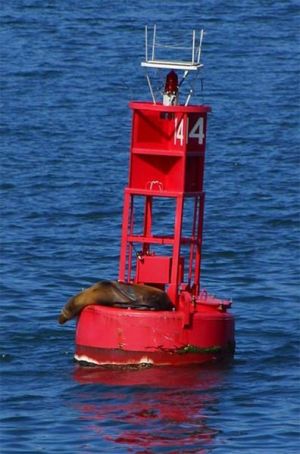England's Historic Seascapes: Southwold to Clacton
Oxford Archaeology (South), 2007. https://doi.org/10.5284/1000277. How to cite using this DOI
Data copyright © Historic England unless otherwise stated
This work is licensed under the ADS Terms of Use and Access.
Primary contact
Oxford Archaeology (South)
Janus House
Osney Mead
Oxford
OX2 0ES
UK
Tel: 01865 263800
Fax: 01865 793496
Resource identifiers
- ADS Collection: 746
- ALSF Project Number: 4729
- DOI:https://doi.org/10.5284/1000277
- How to cite using this DOI
England's Historic Seascapes:
Southwold to Clacton
ALSF Project Number 4729
Oxford Archaeology, 2007
The Galloper
Primary Subcharacter Type:
Caution area

Main Character / current form and use
The Galloper area is currently characterised as a named navigation feature. The Galloper is a sandbank, around 50 km offshore from the Felixstowe area, around 11.5 km long and less than 1 km wide. The general depth of the area is 30-50 m to the west and 20-30 m to the east. However the depth over the Galloper itself decreases from 20 m to as little as 2 m. The geology is predominantly gravel and sand over the London Clay. The tidal range in the character area is within the range of 3-4 m at Mean Spring Tide (DTI 2004).
The character area is transited by passenger ferries, bulk carriers and tankers, though shipping appears to avoid the area of the Galloper (Jones et al nd). As a result of its proximity to the ports of Harwich and Felixstowe the northern half of the area comes within the jurisdiction of the Harwich regulatory system. It is subject to restrictions concerned with high speed craft, submarine cables and traffic separation and is covered by Vessel Traffic Services (VTS). The southern half of the character area does not fall under the jurisdiction of Harwich but is subject to restrictions concerned with high speed craft, submarine cables, changing depths and draught restrictions.
A secondary Royal Yacht Association (RYA) route also crosses the area to the south, heading east-west out to the open sea, representing continental sailing. The area is also visited for recreational fishing purposes. A submarine network cable runs north-south through the area connecting the United States with the UK, Germany and the Netherlands.
The character of the area is likely to change considerably as on 19th February 2007 planning consent was given to Greater Gabbard Offshore Winds Ltd (Airtricity and Fluor) for the construction of a windfarm comprising 140 turbines over two sites. The larger site covers much of the character area, the second site is located on the Gabbard sandbanks (see The Gabbard). Overall the area will encompass 147 km� of seabed and is expected to produce 500 MW of energy - enough to power 415,000 homes, more than the domestic demands of Suffolk. Approval for the development was given as part of a wider push towards renewable energy sources. Government targets are to convert 10% of the UK�s energy needs to renewable sources by 2010. The Greater Gabbard site will count towards 5% of this proportion. Among other reasons the site was chosen due to its good wind resource, low recreational and fishing activity, good seabed properties and the absence of known archaeology. The company suggest that little impact is expected on existing hydrodynamic, wave and sedimentological regimes, though the seascape will significantly change. A navigational channel will be maintained for safety.
Historic Character and archaeological potential
The Galloper is represented as a navigational hazard on the admiralty chart for 1855 and would have been avoided by shipping. In 1891 the Enterkin was recorded as grounding on the Galloper, killing all on board (Jarvis 1990, 65). Other wrecks known to be located in the area include the Ellewoutsdijk and La Flandre, both of which were sunk by mines. A total of eight known wrecks are located in the area, six of which are classed as dangerous. The potential exists therefore for shipwreck archaeology although it is not expected to be high.
The Albert Close fishing chart of 1953 cites the eastern edge of the Galloper as good ground in January and February for plaice, cod, sole and roker.
The area has potential to contain submerged prehistoric landscapes, features or artefacts, having been dry land prior to 8000 BP. However, no investigation work is known to have been done in this area.
Character perceptions
The Galloper sandbank is avoided by shipping and likely to be well-known by the maritime community transiting the region. An account of the Association discussed by Laughton and Heddon in the 1920's tells of narrowly avoiding the Galloper in the storm of 1703 (http://www.ukweatherworld.co.uk).
The construction of the Greater Gabbard wind farm will undoubtedly result in a changed perception of the character area. The turbines will be significant for sea-users. Although wildlife groups have expressed worries about birds hitting the turbine blades local response has generally been quite positive and the Suffolk Preservation Society have shown support for offshore development of this sort, rather than terrestrial.
Bibliography
DTI 2004. Mean Spring Tidal Range: Atlas of UK Marine Renewable Energy Resources. Department of Trade and Industry, 2004
Greater Gabbard Offshore Winds Ltd, 2005, Wind Farm Non-Technical Summary. Greater Gabbard Offshore Winds Ltd.
Jarvis, S., 1990, East Anglia Shipwrecks. Countryside Books
Jones, L. A., Coyle, M. D., Evans, D., Gilliland, P.M., & Murray, A. R., Southern North Sea Marine Natural Area Profile: A contribution to regional planning and management of the seas around England. Peterborough: English Nature.
UK Weatherworld. Available at: http://www.ukweatherworld.co.uk) (13/03/2007)
Wikipedia. Available at: http://en.wikipedia.org (15/03/2007)








